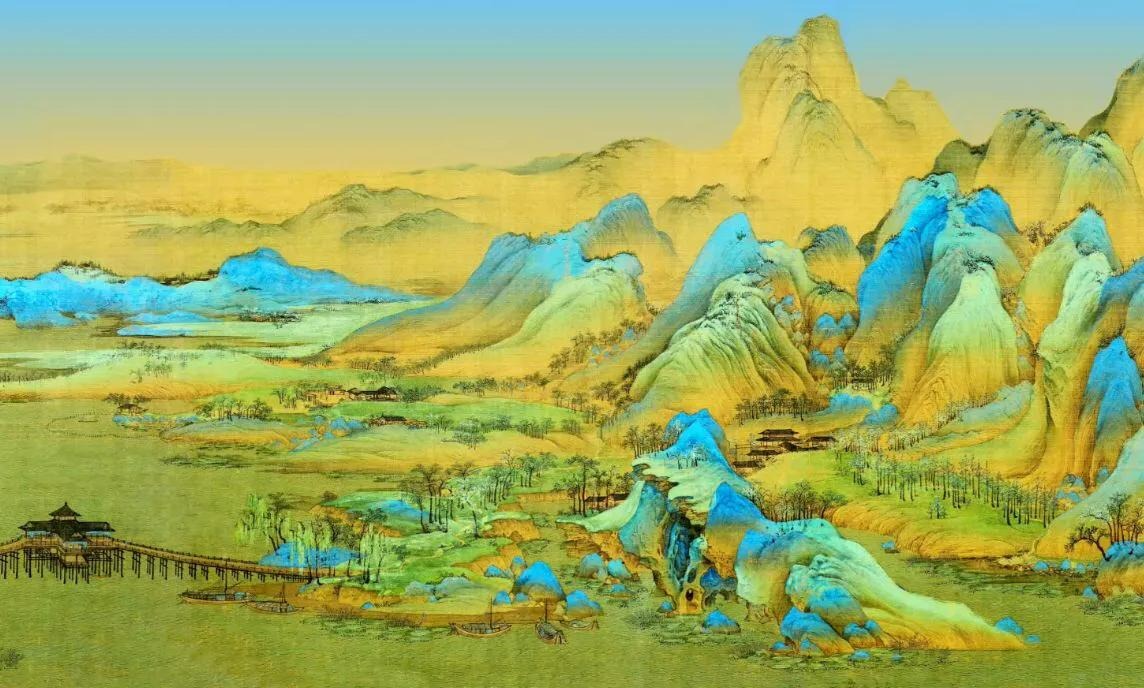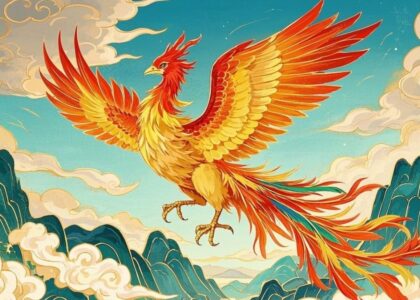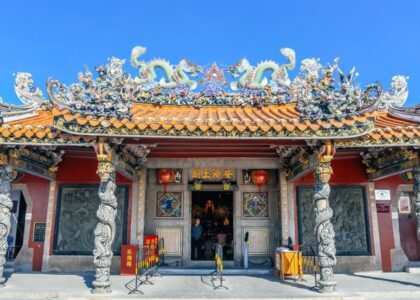Whenever our gaze meets the “A Thousand Miles of Rivers and Mountains” by Wang Ximeng from the Northern Song Dynasty, it feels like embarking on a marvelous journey through time and space. This monumental work of green landscape painting shines like a brilliant pearl, exuding unparalleled charm.
“A Thousand Miles of Rivers and Mountains” was created during the Northern Song period, a time of remarkable cultural and artistic prosperity. In that era, many literati emerged, revering nature and pursuing a poetic life. This painting was born from such a cultural background, showcasing not only the landscape of the Northern Song period but also reflecting the people’s reverence for nature and their yearning for a beautiful life.

In the painting, the peaks rise and fall like colossal dragons, with majestic mountains towering impressively as if piercing the sky. Those steep summits are masterpieces of nature, imbued with a powerful sense of grandeur. Some peaks soar into the clouds, capped with pure white snow, resembling a sacred paradise; others are lush and green, teeming with life. Clouds and mist drift like fine gauze around the mountains, adding a touch of mystery and ethereality. Within this ephemeral mist, countless ancient stories and legends seem to lie hidden, waiting for us to listen and explore.
We can almost envision the figures within the painting: scholars and gentlemen composing poetry and painting in pavilions among the mountains, discussing life’s ideals; fishermen casting nets on the river, savoring the joy of labor; woodcutters chopping wood in the woods, their songs echoing through the valleys. Their lives are filled with poetry and tranquility, evoking a deep yearning in us.

The color usage in “A Thousand Miles of Rivers and Mountains” is exceptional. The rich greens reflect the vibrant vitality of nature, providing a sense of tranquility and harmony. This color combination not only aligns with the traditional Chinese aesthetic of landscapes but also demonstrates the artist’s profound understanding and appreciation of nature.
This painting is not merely a work of art; it is a historical scroll embodying the cultural, artistic, and social landscape of the Northern Song period. The artist Wang Ximeng, with his astonishing skills and unique artistic perspective, vividly depicted the grandeur of the nation’s mountains and rivers. The painting’s embedded reverence for nature, love for life, and relentless pursuit of beauty resonate deeply within us, transcending time.

Today, a unique lacquer bracelet emerges, ingeniously incorporating the inspiration from “A Thousand Miles of Rivers and Mountains,” offering us a dual feast for the eyes and spirit.The inspiration for this lacquer bracelet stems from a deep love and admiration for “A Thousand Miles of Rivers and Mountains.” The artisans, moved by the majestic landscapes, unique color applications, and rich cultural connotations of this masterpiece, decided to infuse its essence into the bracelet, allowing more people to experience the charm of the painting.
During the creation process, the artisans drew color inspiration from “A Thousand Miles of Rivers and Mountains,” choosing the iconic green as the main hue for the bracelet. Just like the lush green mountains and serene waters in the painting, this vibrant green reflects the vitality and hope of spring’s flourishing forests and the cool comfort of a clear stream in summer. Each bead seems to be a part of the painting—either a magnificent peak or a drifting cloud, or perhaps a gently flowing stream, echoing with soothing sounds.

Beyond color, the bracelet’s design also references the landscape depicted in “A Thousand Miles of Rivers and Mountains.” The shapes and textures of the beads are meticulously crafted, resembling the undulating contours of the mountains—a miniature representation of towering peaks; they evoke the meandering patterns of rivers, presenting the fluidity of rushing waters. Additionally, the weaving method of the bracelet might reference traditional knot artistry, symbolizing auspiciousness and blessings, further enriching its cultural significance.
Lacquer, as an ancient intangible cultural heritage craft, endows this bracelet with unique and captivating charm. Its distinct warm luster, akin to the delicate texture of a painting, makes it irresistibly touchable. Gazing at these beads, one can almost see the layered contours of the mountains, representing the grandeur of nature, where every line tells of its majesty; or witness the flowing patterns of rivers, showcasing the vitality and rhythm of life.

The crafting process of this lacquer bracelet is intricate, with every step reflecting the artisans’ dedication and wisdom. From careful material selection to detailed shaping, then patiently applying lacquer, followed by repeated polishing and finally buffing to a shine, each phase demands perfection and meticulous attention, ensuring that the bracelet becomes a work of art.
Wearing this lacquer bracelet is like adorning one’s wrist with the majestic and poetic essence of a thousand miles of rivers and mountains. It is not just an accessory; it is a profound tribute to the treasures of Chinese traditional culture and a heartfelt transmission of heritage. In this fast-paced modern society, we often find ourselves burdened by various pressures, yearning for a place of solace for the soul. This bracelet serves as a small spiritual haven, allowing us to appreciate the grandeur and elegance of the Chinese landscape with every gesture, and to feel the tranquility and depth that emanate from ancient scrolls. It constantly reminds us not to forget the inner peace and beauty amidst the pursuit of material gain.

This lacquer bracelet is a perfect blend of art and craftsmanship, a dazzling collision of traditional culture and modern life. It allows us to experience the profound depth and boundless charm of Chinese culture in our daily lives. Let us cherish this unique gift, passing on the poetic essence of a thousand miles of rivers and mountains, and enabling more people to appreciate the brilliant glow of Chinese traditional culture, collectively writing the poetry of our era.







